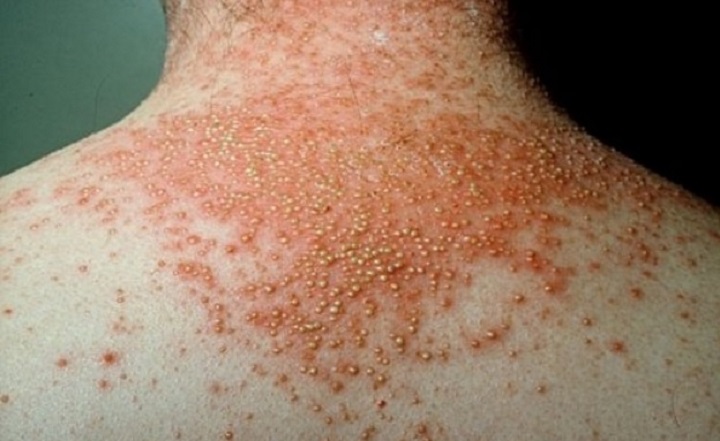Pustular psoriasis causes raised, small, white or yellowish bumps/lesions that are filled with pus on the skin, which first becomes red and sensitive.
You may have breakouts in particular areas of the body like your feet and hands, but pustular psoriasis can affect the entire body. The blisters may get drier and shed in addition to becoming darker in color. Pustular psoriasis can also co-occur with other types of psoriasis like plaque psoriasis.
Pustular Psoriasis Triggers
There are a number of factors that may contribute to recurrences and severe symptoms. Some of these triggers are:
– Steroids, penicillin, lithium, and some other medications
– Stress
– Injections and skin injuries
– Too much exposure to sunlight
– Smoking
There are three types of pustular psoriasis;
Von Zumbusch
Von Zumbusch psoriasis is also referred to as acute generalized pustular psoriasis and is the most severe and painful type. It causes large patches of blisters that are red in appearance and filled with pus. Von Zumbusch causes fever, severe itching, and joint pain. However, rehydration, topical treatments, and antibiotics work to relieve the symptoms.
Palmoplantar
Palmoplantar pustular psoriasis is easier to detect as it occurs on the palms of the hands and soles of the feet. The patches appear red initially but then darken, peel off, giving them a cracked appearance.
Palmoplantar may cause inflammation in the affected areas and affects women more than men. Palmoplantar often requires more than one method of treatment, such as combining light therapy and topical medicines with immunosuppressant drugs.
Acropustulosis
Acropustulosis is the rarest type of pustular psoriasis and primarily affects the toes, fingers, and even underneath the nails. Since the condition is quite rare, it is often treated using a combination of medicines and treatment methods.
Featured Image: Twitter





